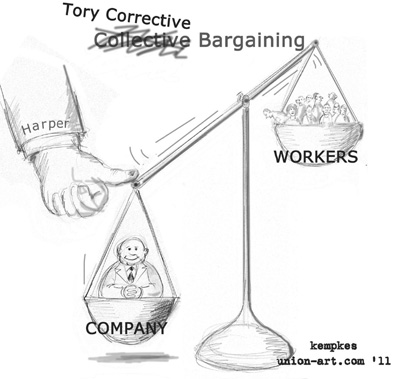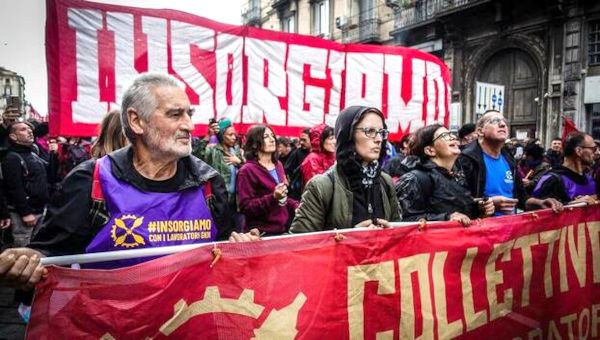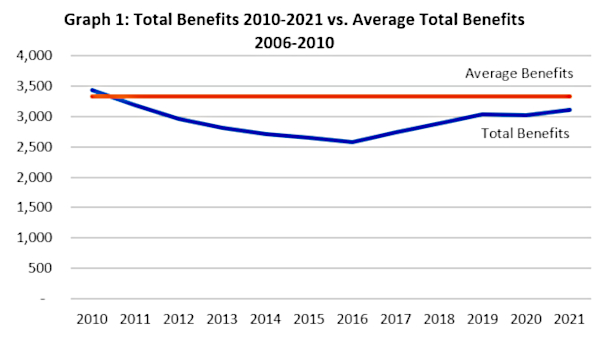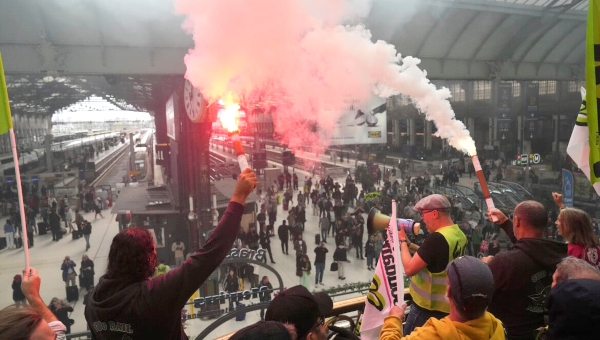Toronto Politics in the Year of the Lockout
We are still very early in 2012 but so far it seems to be shaping up as the Year of the Lockout.
A lockout is a labour disruption initiated by management, shutting unionized workers out of the workplace if they do not agree to the employer’s contract demands. A wave of lockouts is a sign that employers are on the offensive, sensing they are in a position to win considerable concessions from workers by forcing them onto the picket lines.
Thus far we have seen lockouts of Rio Tinto Alcan workers in Quebec and at the Caterpillar-owned Electro-Motive Diesel in London, Ontario. Workers at Electro-Motive were asked to take pay cuts amounting to a 50 per cent reduction for some of them. It is likely that Toronto municipal workers from CUPE Locals 416 and 79 will also be locked out in early February.

Employers on the Offensive
This program will not easily restore profitability, given the depth of the crisis, but it will be used to roll back many of the gains made by the working-class and social justice movements since the 1940s. The goal is clearly to weaken the position of working people, including those who are unemployed or not in the labour market, pushing more people into precarious positions and driving many deeper into poverty.
In Toronto, the face of the austerity agenda has been Mayor Rob Ford. Since his election in 2010, Ford has moved to slash municipal services, favour cars over public transit, privatize public services, and attack municipal workers’ wages and working conditions. On January 17, Ford received a minor setback when City Council amended his budget plan, refusing to pass a few of the most harmful cuts. No doubt public mobilization by groups like Stop the Cuts and other community organizers was a factor here, but the demonstrations didn’t prevent Council from ultimately passing a slightly gentler austerity budget.
Now, the Ford regime is going after the municipal workers, and specifically the job security provisions that offer some protection in the case of privatization. At this point, there is little sign of an effective mobilization or solidarity strategy among municipal workers and their unions. Nor is there much sign of a serious effort to communicate with the broader public about the defense of job security provisions at a time when many are finding themselves in increasingly precarious situations. Indeed, there is little sign of a strategy to win in the Year of the Lockout.
Lessons of Mass Insurgency
To begin thinking about a strategy to win, it is useful to remember how good jobs for some and decent, though never adequate, social programs were won in the first place. It was mass insurgency that won these rights, as huge numbers mobilized and took effective action.
This is the 75th anniversary of the Flint sit-down strike against General Motors in 1936-37. The strike included plant occupations, militant mass pickets and broad community support that helped sustain activism in the absence of strike pay. The victory at Flint launched a whole new level of fightback, against the austerity agenda of the Great Depression and for union rights, social programs and decent working-class jobs.
A strike like the Flint sit-down does not come out of nowhere. Layers of radical activists connecting back to the labour upsurge at the end of World War One had been attempting to build unions, promote and protect free speech and strengthen anti-poverty movements for a long time. There were important militant strikes amongst auto workers (Toledo Autolite), teamsters (Minneapolis) and dock workers (San Francisco) in 1934.
The Flint strike inspired a wave of militant organizing in North America that continued into the years following World War Two. It ultimately won legal collective bargaining rights, welfare state social programs, and decent pay and benefits for many unionized workers in specific industries.
While 1937 did see significant labour militancy in Canada, it was only during and after World War Two that these mobilizations reached the level of mass insurgency. The 1945 Ford strike in Windsor was won through a plant blockade in which cars, trucks and city buses were used to shut down the roads around the power plant that the company sought to reopen as winter approached. Along with the vehicle blockade, picket lines were massive and militant, including many workers who shut down their own plants in sympathy strikes. Huge sectors of the community mobilized to ensure the strikers and their families were sustained with food and clothing.
The welfare state and union rights were developed further in the face of militant mobilization in the 1960s and 1970s. In Canada, this period saw the unionization of many public sector workers and the dramatic improvement of social programs. A 1965 wildcat strike by postal workers that defied labour law played an important role in contributing to public sector union activism.
The year 1966 was the year of the wildcat strike, in which many Canadian workers walked off the job illegally during their collective agreements to protest management initiatives and demand improvements. The struggles of workers fueled and were fueled by militant mass movements for national liberation (in Quebec and for Indigenous peoples), against the War in Vietnam, for students’ rights, against racism, and for the liberation of women, gays and lesbians.
The Year of the Lockout is in some ways the mirror image of the Year of the Wildcat, as it is now management on the offensive, seeking to take advantage of the ways in which neoliberalism has undermined labour and social movements, wiping out the gains made since the 1940s. Unfortunately, it will not be easy to rebuild the level of militancy that won these gains in the first place, but this should be the goal of radical movements.
These gains were won by mass insurgency, when large segments of the working-class (think hundreds of thousands) were willing to defy authorities and take over workplaces, streets and community spaces. This was the result of a long and difficult process of radical movement-building dating back to the early years of the 20th century.
Building the Fightback Today
There have been important elements of mass insurgency in the resistance politics of the past year. The revolutions in Tunisia and Egypt showed the power of mass mobilization in overthrowing brutal dictatorships, sparking uprisings elsewhere in North Africa and the Middle East. In Southern Europe, movements of the ‘indignant’ took over public spaces and played an important role in mobilizing against brutal cutbacks and layoffs in the age of austerity. The Occupy movement has built on this politics of seizing space and building new forms of resistance.
 |
However, the organized labour movement has been largely paralyzed in the face of this offensive. Building solidarity between the shrinking groups of workers who have some degree of job security to defend and those who are being driven deeper into poverty and precariousness is not easy. We need strategic discussions to consider how we use the current struggles to begin rebuilding the kind of mass insurgency that can turn back the austerity agenda and see Ford, Harper and others booted from office as reviled figures whose legacy is to be filed along with Canadian prime minister R.B. Bennett, and U.S. presidents Calvin Coolidge and Herbert Hoover as historical footnotes – people who took the wrong direction in the face of a global slump. These discussions need to be open, democratic and non-sectarian-based on the premise that no one on the Left has the monopoly on truth, and no political tendency has all the answers.
This strategic discussion should accompany new efforts at coalition building, and specifically the development of democratic labour-community coalitions that bring together activists from many networks and locations to organize joint actions and hash out perspectives. At their best, such coalitions could pull together the audacity and community-organizing strengths of Occupy and Stop the Cuts with the mass base and potential clout of unions. These democratic labour-community coalitions would benefit tremendously from the rebuilding of activist networks within unions, in which rank-and-file workers play a prominent role. Modest initiatives in this direction in CUPE 79 are an important example.
The Greater Toronto Workers’ Assembly is positioned to make an important contribution to the practical work of democratic labour-community coalition building and to the development of spaces for strategic discussion among radicals. To do so, it will need to err on the side of inclusiveness, reaching out both to union activists and movement militants from organizations like Stop the Cuts and Occupy who inject a dose of audacity into Toronto activism. The Assembly will also need to work hard on the equity front to begin to transform itself into the kind of queer, feminist, anti-racist and anti-colonialist space required to support genuinely open and democratic strategic thinking on the Left.
We need to be building for the next Year of the Wildcat now, during the Year of the Lockout. The steps we take in the fightback against the Ford agenda can model the audacity, democracy and mass orientation of past struggles, as radicals contribute to building the basis for the next mass insurgency by taking action and inventing strategies for effective resistance. •
This article first appeared on Toronto New Socialists website.





